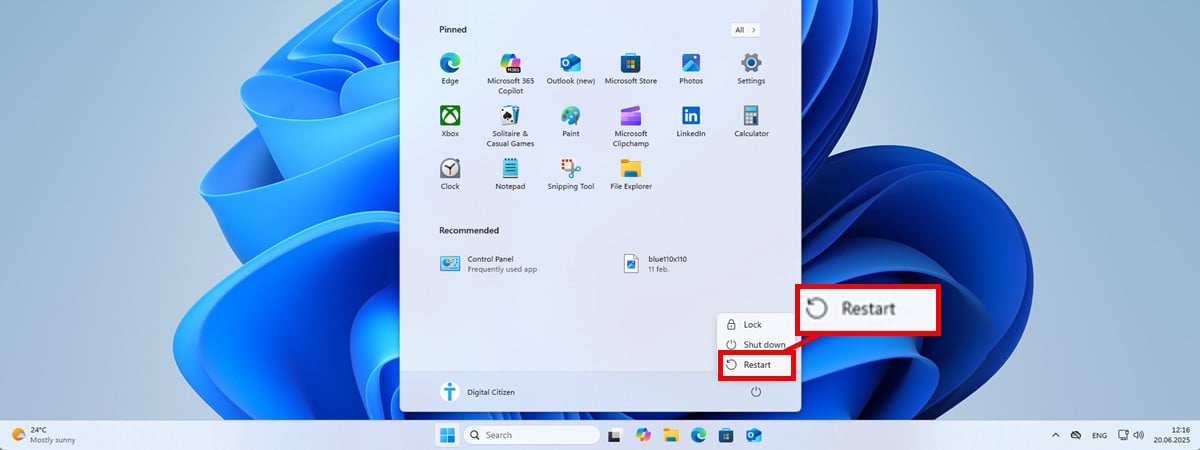Nvidia GeForce RTX 5070 Ti review: a cheaper RTX 4080

Nvidia’s new RTX 5070 Ti graphics card is the most intriguing entry in the 50-series lineup so far, promising to outperform last-gen cards that were even more expensive. At $749, it comfortably beats AMD’s $899 RX 7900 XT, trades blows with the $999 RX 7900 XTX, and is closer than I was expecting to Nvidia’s own $999 RTX 5080. It’s a capable card for a relatively good price, and that makes the RTX 5070 Ti an ideal choice if you’re tempted to move to 4K gaming or want a card that can deliver high frame rates for 1440p.
But like the rest of the 50-series cards, the RTX 5070 Ti is not as much of an upgrade as we’ve come to expect from Nvidia. The card is around 14 percent faster at 4K than the last-generation RTX 4070 Ti and 22 percent faster at 1440p. It’s nearly as fast as the RTX 4080 Super, which launched at $999, and it’s more than 80 percent faster at 4K than the two-generations-old RTX 3070 Ti. Those are decent numbers, but it’s mostly because the 40 series was such a big leap.
All of this makes the RTX 5070 Ti a good deal at its $749 MSRP, but only if it stays there — and prices are already going up.
Editor’s note: We aren’t scoring the RTX 5070 Ti until the pricing situation is clear at launch on February 20th.
I’ve been testing MSI’s RTX 5070 Ti Ventus 3X OC edition, which looks almost identical to the RTX 4070 Ti Super I reviewed last year. MSI’s tried-and-true Ventus 3X OC cards use a triple-fan layout with a copper baseplate and heat pipes to cool the GPU and memory modules.
For both my 4K and 1440p testing, I paired MSI’s RTX 5070 Ti with AMD’s latest Ryzen 9 9800X3D processor and Asus’ 32-inch 4K OLED PG32UCDP monitor. I also put the RTX 5070 Ti up against the $999 RTX 5080 — the next step up in the RTX 50 series — as well as the RTX 4080, RTX 4070 Ti, RTX 4070 Ti Super, and AMD’s Radeon RX 7900 XT.
The RTX 5070 Ti delivers what you’d expect from a modern GPU: playable frame rates at both 4K and 1440p with all the settings maxed out. While the hardware isn’t quite as sleek as Nvidia’s Founders Edition cards, MSI’s GPU will fit well into most gaming rigs.
Without DLSS or ray tracing enabled, the RTX 5070 Ti is nearly 13 percent faster than the RTX 4070 Ti Super at 4K and 1440p, enough to make it practically identical to the RTX 4080 at 4K and not far behind at 1440p. You could even overclock the RTX 5070 Ti with the click of a button in Nvidia’s app or by using MSI’s Afterburner utility and get slightly ahead of the RTX 4080 Super.
The RTX 5070 Ti makes for a great 1440p experience and solid 4K gaming, especially if you’re willing to turn the settings down slightly or overclock the card to squeeze out a little more performance. The next step up in the RTX 50-series line, the $999 RTX 5080, is around 12 percent faster than the $749 RTX 5070 Ti at 1440p and around 15 percent faster at 4K resolution — but you have to pay an extra 33 percent in cash for not much more performance.
The RTX 5070 Ti, much like the RTX 5080, makes the most sense if you’re upgrading from the RTX 30-series models or earlier. At 4K without DLSS or ray tracing, the RTX 5070 Ti is nearly 84 percent faster than the RTX 3070 Ti. It will be a noticeable upgrade if you’re using an RTX 30-series card or older, and you’ll also get access to Nvidia’s Frame Generation technology.
Nvidia’s RTX 3070 Ti, which launched in 2021, was only suitable for very entry-level 4K gaming, in part because it shipped with just 8GB of VRAM. The limitations were especially noticeable in the Forza Motorsport benchmark, where the RTX 3070 Ti averaged a measly 33fps compared to the 109fps on the RTX 5070 Ti.
I’m hoping we won’t see those same limitations further down the line with the RTX 5070 Ti’s 16GB of VRAM. The original RTX 4070 Ti only had 12GB of VRAM, which Nvidia bumped up to 16GB with the RTX 4070 Ti Super. If there was a little more VRAM on the RTX 5070 Ti, then it would help avoid any video memory limits at 4K gaming in the future.
DLSS 4 and Multi Frame Gen
I’ve also been testing DLSS 4 and Nvidia’s new Multi Frame Generation technology with the RTX 5070 Ti. Multi Frame Gen uses the latest AI graphics models, powered by an updated transformer architecture, to generate up to three additional frames per traditionally rendered frame, pushing the RTX 5070’s frame rates beyond what it’s normally capable of at 4K and 1440p.
Cyberpunk 2077 has been a great test title for DLSS 4 and Multi Frame Gen, demonstrating how Nvidia’s new technique can provide motion clarity improvements with higher frame rates. Without DLSS 4, Cyberpunk runs at an unplayable 15fps average with ultra settings and full ray tracing enabled on the RTX 5070 Ti at 4K resolution. I was able to push that all the way up to 110fps thanks to 4x Multi Frame Gen.
As I’ve argued in my previous RTX 50-series reviews, this still doesn’t feel like a real 110fps because it maintains the same input latency it has after DLSS Super Resolution is applied. Super Resolution renders the game at a lower resolution and then uses AI to upscale it — in this case, from 15fps to 33fps. Multi Frame Gen then creates the three extra frames to make the motion of gameplay look smoother, but it still feels like a sluggish 33fps, so it’s less reactive than a real 110fps when you hit a button or click to shoot.
DLSS Multi Frame Gen still makes the most sense at 1440p with the RTX 5070 Ti, simply because the base frame rates (once Super Resolution is applied) are high enough to make the input latency less of an issue.
While there still aren’t many games that support Multi Frame Gen and DLSS 4, you can force these techniques on with Nvidia’s new app. DLSS 4’s new transformer model even works on existing RTX cards, so you’ll get the benefits of improved image quality if you force DLSS 4 on in games before developers have patched them.
Like the rest of the RTX 50 series, the RTX 5070 Ti is also a capable card if you want to do video editing or run AI workloads. I found that the RTX 5070 Ti was nearly 14 percent faster than the previous RTX 4070 Ti in PugetBench’s DaVinci Resolve test and Procyon’s AI XL (FP16) test.
Nvidia recommends a 750-watt power supply for the RTX 5070 Ti, which is only 50 watts more than for the RTX 4070 Ti and 4070 Ti Super. The 300W total graphics power is just 15 watts more than the 4070 Ti.
At 4K resolution, the RTX 5070 Ti averaged 271 watts across the nine games tested — a little more than the 245-watt average draw of the RTX 4070 Ti but less than the RTX 4080’s 282W average for almost identical performance.
I only noticed the RTX 5070 Ti hit its max power draw of 300 watts during the Metro Exodus extreme benchmark, and it also maintained the exact same max GPU temperature (68 degrees Celsius) of the RTX 4080 in my open bench testing. It’s great to see Nvidia hasn’t massively increased power or cooling requirements here.
The RTX 5070 Ti continues the 50-series trend of modest generational improvements. At 1440p, the RTX 5070 Ti delivers a good deal more performance than the RTX 4070 Ti and 4070 Ti Super, but I was really hoping for more at 4K. That would have pushed this firmly past the RTX 4080 and 4080 Super to make 4K gaming even more affordable.
Whether the RTX 5070 Ti is a good value will come down to pricing and availability. Without a Founders Edition to put pressure on board partner pricing, I think it’s going to be very hard to find an RTX 5070 Ti at $749. Micro Center is already listing overclocked models at $999, the same price as the RTX 5080, and only a single card is listed at $749 out of the 12 available. Nvidia insisted that the MSI card we tested has an MSRP of $749, though it was listed as $909 at Micro Center just hours before this review went live.
I suspect it will come down to availability, too. It looks like there’s a real shortage of GPUs in the market. The RTX 5090 was barely in stock, and restocks are rare right now. Even the RTX 5080 is sold out at most places, and one retailer in the UK says it won’t be getting more for at least six weeks, with some models even further out. 40-series Nvidia cards and AMD’s 7900 XT series also look thin on the ground.
AMD might help with keeping pricing under control, as long as it has stock available. It’s about to enter the market with two new GPUs that look like they’re going to compete directly with Nvidia’s RTX 5070 Ti and RTX 5070. Nvidia has even delayed the debut of its RTX 5070 until March, which suggests a GPU pricing battle is about to take place at this important part of the market.
The RTX 5070 Ti is a good purchase if you can actually get one at $749, but it might be worth waiting a few weeks to see how AMD’s performance, price, and availability shape up against Nvidia’s latest GPU.
Source link















